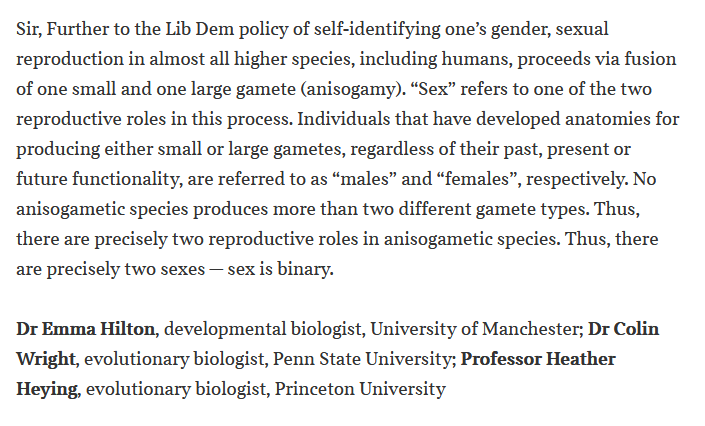The original text submitted to The Times was slightly longer. Here it the longer version in one handy tweet.
@SwipeWright @HeatherEHeying
Sexual reproduction in almost all higher species, including humans, proceeds via fusion of one small and one large gamete (anisogamy).
@SwipeWright @HeatherEHeying
Sexual reproduction in almost all higher species, including humans, proceeds via fusion of one small and one large gamete (anisogamy).
“Sex” refers to one of the two reproductive roles in this process. Individuals that have developed anatomies for producing either small or large gametes, regardless of their past, current, or future functionality, are referred to as “males” and “females”, respectively.
No anisogametic species produces more than two different gamete types. There are precisely two reproductive roles in anisogametic species. Thus, there are precisely two sexes - sex is binary.
In very rare instances, males or females exhibit reproductive features atypical for their sex. Such people must be treated with compassion. Many of these males or females are fertile, and produce small or large gametes accordingly.
Atypical sex characteristics do not generate a third gamete type or create a third reproductive role.
To interpret the multitude of variations in reproductive anatomy as evidence of a third (or more) sex is to commit a category error and invent the myth that sex in humans is not binary.

 Read on Twitter
Read on Twitter


